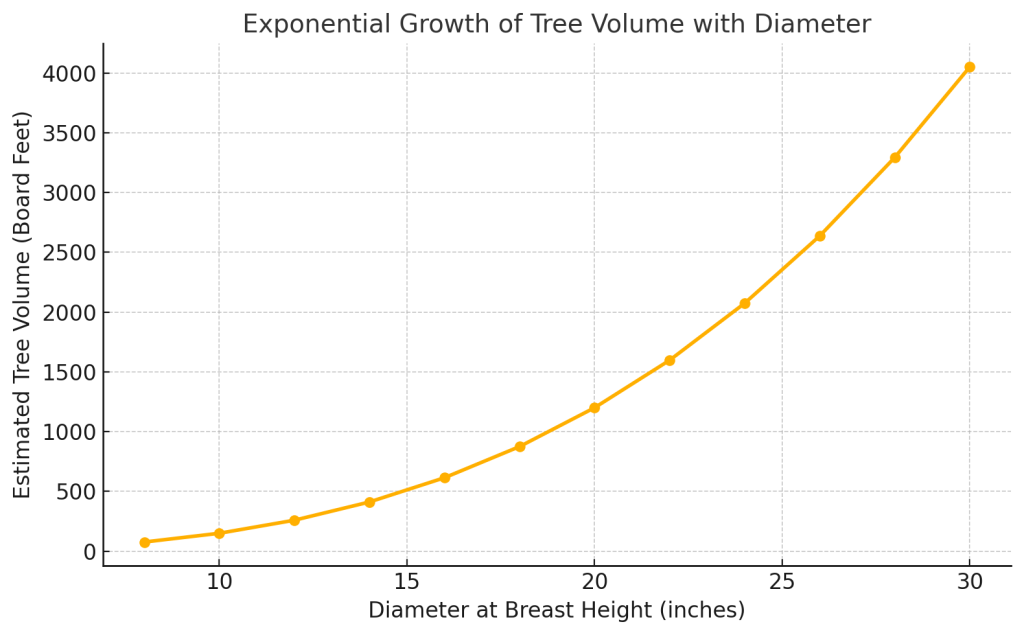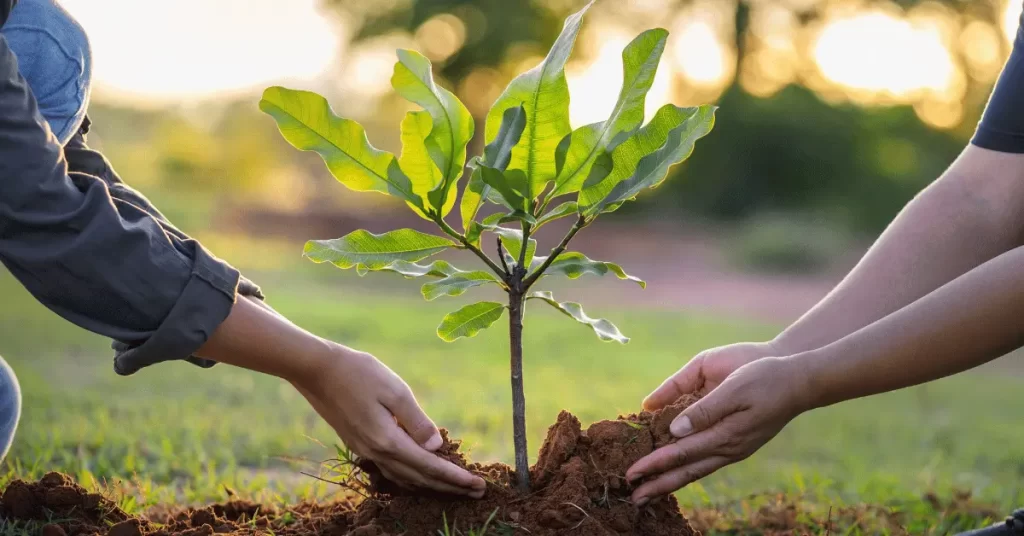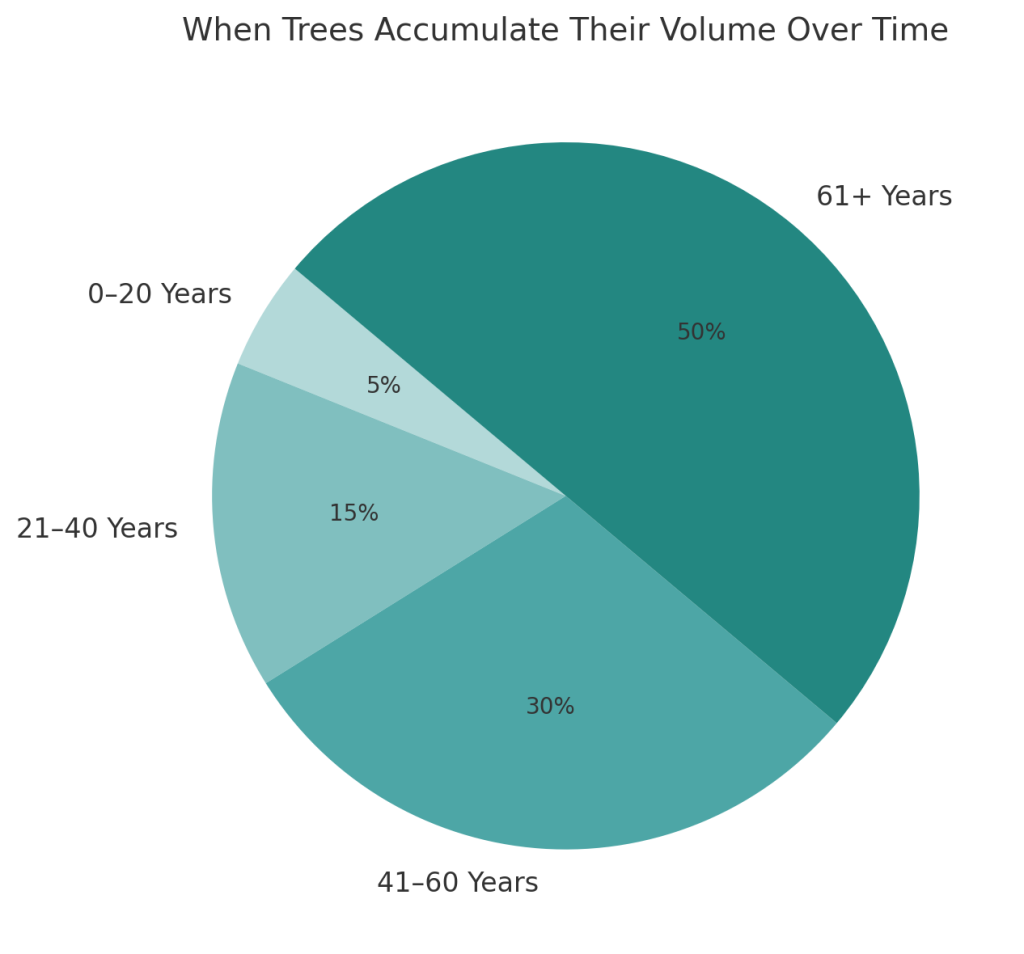If you’ve ever wondered when a tree reaches peak timber value, our in-depth guide on the lifecycle of a tree breaks down each stage of growth and what it means for your woodland’s potential.
Trees as Living Investments

The Lifecycle of a Tree
Trees, like all organisms, pass through a series of developmental phases:
- Seedling Stage (0–5 years): Tiny and vulnerable, trees in this phase are establishing roots and competing for sunlight.
- Sapling Stage (5–20 years): During this phase, a tree grows rapidly in height and starts developing a central stem.
- Pole Stage (20–40 years): The trunk thickens, and volume begins to accumulate. A tree in this stage may be thinned to encourage better specimens.
- Mature Stage (40–80+ years): Growth slows but volume is significant. This is the prime time for timber value, especially in species like black walnut and white oak.
- Overmature/Decline Stage: Decay and disease become more likely. Leaving trees too long may reduce quality and profitability.
The Timber Value of Maturity
Species like black walnut and white oak gain significant value as they mature. High-quality walnut logs can fetch premium prices in veneer markets when harvested at the right size and condition. However, waiting too long may lead to defects such as rot or branching that reduce value.
Below is a chart showing estimated historical price trends for black walnut over the past two decades:

Sustainable Forestry Practices
At Ohio Timber Works, we believe in harvesting responsibly—retaining future crop trees, removing poor genetic stock, and supporting natural regeneration. Our team helps landowners make decisions that support long-term forest productivity and value.
Rather than rely on general consulting advice, contact the experts at Ohio Timber Works for a tailored assessment of your woodland’s maturity and harvest potential.
Tree Growth and Volume Accumulation
Tree growth is not linear. A tree’s volume increases exponentially with diameter, meaning small gains in girth can result in large increases in merchantable wood. For example:
- At 12″ DBH (diameter at breast height), a tree may yield ~100 board feet.
- At 20″ DBH, yield can jump to over 300 board feet.
This makes timing a harvest critical—not just for profit, but for long-term forest health.
When to Harvest: Timing for Maximum Return
Harvesting in the dormant season—typically late fall through winter—helps protect soil structure and reduces stress on wildlife. Cold-season harvesting also improves access and results in less damage to residual trees.
Maturity and health are key. Once a tree reaches commercial diameter and shows no major structural flaws, it becomes a candidate for harvesting. Species like maple, beech, and oak reach optimal maturity at 60–100 years, depending on site conditions.

Further Reading and Resources
Through the development and execution of a customized forest management plan, you’ll work toward achieving the following goals for your woods:
- Promoting the growth of high-quality trees that offer long-term timber value.
- Encouraging fast-growing species to accelerate future harvest potential.
- Supporting mast-producing and den trees that enhance habitat for wildlife.
- Maximizing the use of available growing space for optimal forest productivity.
For a deeper look at how to plan your harvest and manage your woodland over time, visit our guide on creating a thoughtful timber harvest plan.


